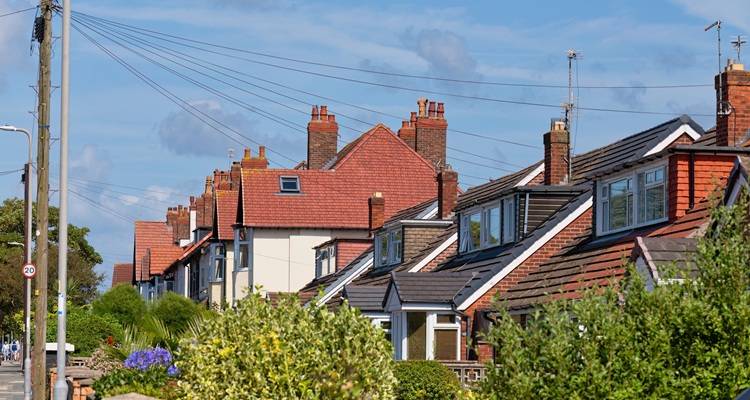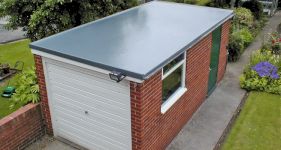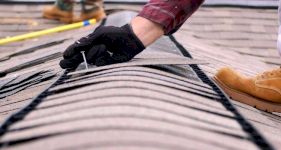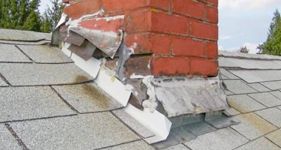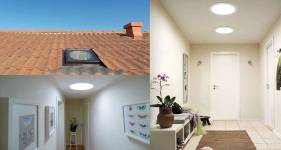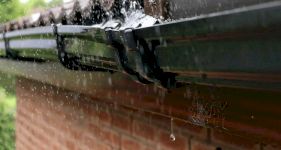Cost of Chimney Liner
- The average cost to install a chimney liner is around £800
- The job will take approximately 1 - 3 days to complete
- A complete pricing breakdown which includes how to tell if your chimney need lining, along with what such a task usually involves
- How long the job should approximately take and a general overview of what kind of jobs can be performed
- How to find and hire a chimney specialist
To line your chimney you can expect to pay between £600-£1000, depending on the type of liner you choose.
So, how can this guide help you?
Discover all you need to know in this ultimate price guide, where we cover all costs included in installing a chimney liner (or flue liner, as it's otherwise known), such as material costs and labour fees.
Looking for a chimney specialist quote?
We have a great selection of chimney specialists ready to give you a quick, free quote for any chimney flue job!
Need some more details?
For all the information about chimney liner costs, check out the guide below!
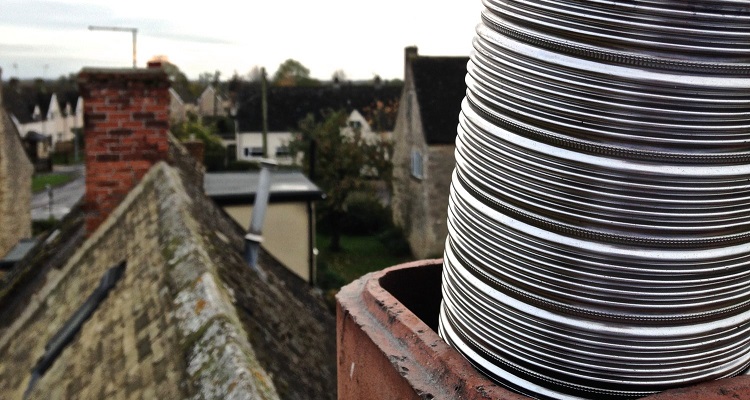
£800
Table of Contents
- How Much Does It Cost To Line a Chimney?
- Labour Costs and Time Scales
- What's Involved in Installing a Chimney Liner?
- How to Know if Your Chimney Needs Lining
- DIY Replacing a Chimney Liner
- Building Regulations & Planning Permission for a Chimney Cowl Installation
- The Different Types of Chimney Liners
- Hiring a Chimney Lining Installer Checklist
- FAQs
- Sources
How Much Does It Cost To Line a Chimney?
Let's start with what the cost of chimney liners depend on?
As a guide the cost to line a chimney is usually between £600 and £1,000, depending on the type of liner you choose.
However, many factors can affect the price a tradesperson will charge for installing or replacing a chimney liner, starting with the size of your chimney. This will significantly impact the cost of installing a chimney lining as you will need to consider the number of materials required to carry out the job.
If hiring a professional, consider the amount of time, it will take the tradesperson to complete the installation. Nearly all tradespeople will charge a daily or hourly rate, so a more extensive job will likely be more costly to carry out as the professional will be working longer on your chimney.
What else will affect the overall costs?
The cost of installing a chimney lining will also be affected by the type of chimney you have. There are many different kinds of fireplaces and chimney vents, some more complex than others - which can affect the costs.
Some of the most common types of chimneys are:
- Masonry chimneys
- Metal chimneys
- Woodburning stove chimneys
How do you know which type of chimney liner you need?
Depending on the type of chimney you have, your tradesperson will advise the best lining material to use. The most commonly used types of chimney linings are:
- Stainless steel flexible liners
- Pumice
- Concrete and clay liners
- Chimney fans and ceramic liners
Each type of chimney liner varies in price, therefore affecting the cost of your installation. A professional tradesperson will inform you of the most suitable liner for your project.
What are the average costs, though?
However, on average, you’ll pay between £600-£1,000 to line a chimney system.
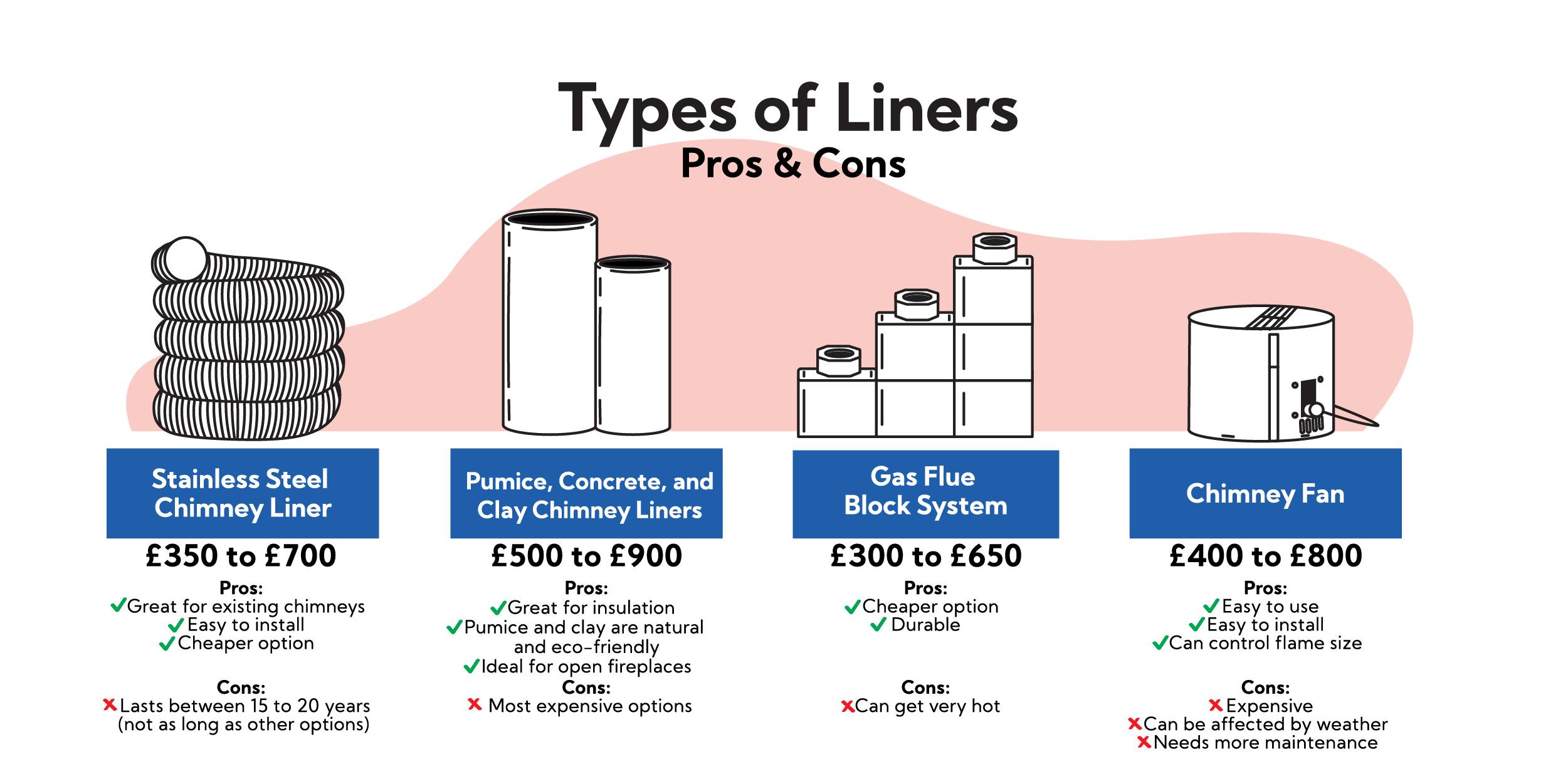
Hi, I was wondering what the durability is like for flexible chimney liners? How many years do they typically last for?
Chimney Liner Installation Prices
The average price of installing a stainless-steel chimney lining in the UK generally starts around £450-£600.
Below is an example of the variations in price between different types of linings and sizes.
| Type of Chimney Liner | Chimney Size (Square Inches) | Cost |
|---|---|---|
| Stainless Steel Flexible Liner | 40-50" | £450-£700 |
| Concrete and Clay Liners | 55-80" | £750-£1,000 |
| Pumice and Ceramic Liners | 85-100" | £850-£1,500+ |
Please note: Installation prices can vary by region, for example London and the South East may be higher than the National average.
Supply Only Costs
Want to install the chimney liner yourself?
You will want to know the supply costs only, so take a look at the table below:
| Item | Average Cost |
|---|---|
| Stainless Steel Flexible Liner | £18-£25 per metre |
| Pumice liner | £12-£18 per liner |
| Clay liner | £30-£40 per liner |
| Liner adapter | £40-£50 |
| Chimney cowl | £20-£40 |
| Twin wall connector | £50-£60 |
Please note: Supply-only prices may vary fluctuate due to the cost of raw materials.
Labour Costs and Time Scales
Next, we're going to look at how much a chimney specialist charges and how long installing a liner will take.
On average, a chimney liner installer will charge between £180 to £280 a day, depending on their experience and knowledge. Prices may be towards to the higher end in locations such as London and the South East due to travel expenses and a higher cost of living.
The time scale will vary depending on what type of liner is being installed - take a look at the table below:
| Type of liner | Duration |
|---|---|
| Stainless Steel Flexible Liner | 0.5-1 day |
| Concrete and Clay Liners | 2-3 days |
| Pumice and Ceramic Liners | 2-3 days |
What's Involved in Installing a Chimney Liner?
Installing a chimney liner can be a tedious task and is better left to the professionals to ensure maximum safety and efficiency. Many homeowners will need a chimney liner replaced or installed expertly at some point in their lives, so understanding the process is a crucial part of budgeting for the job.
- Assessment – The tradesperson first visits your property to assess the size and complexity of the job. They measure the chimney cavity and determine the most suitable materials needed for the liner installation. This helps ensure the correct liner is selected for safety and efficiency.
- Preparation – On the day of installation, the tradesperson prepares the liner by cutting it to the precise size required for your chimney. Proper sizing is crucial for a secure fit and effective operation of the liner.
- Insertion – The liner is carefully inserted down the chimney flue from the rooftop. The tradesperson guides it down until it reaches the thimble, which is an opening that connects the liner to the fireplace inside your home.
- Interior Connection – Once inside, the tradesperson connects the liner to the tee position and securely attaches it to your fireplace or stove. This step ensures the liner directs smoke safely out of your home.
- Exterior Finishing – Returning to the roof, the tradesperson fits the chimney liner’s top plate, which protects the chimney cavity and prevents rainwater from entering. They seal the edges with weather-resistant materials, trim any excess liner, and secure a rain cap.
- Added Precaution – The rain cap protects the liner from water damage and stops birds or animals from nesting inside.
What is the purpose of a chimney liner?
The primary purpose of a chimney liner is to limit the heat that the fireplace produces from igniting nearby woodwork and other combustible materials.
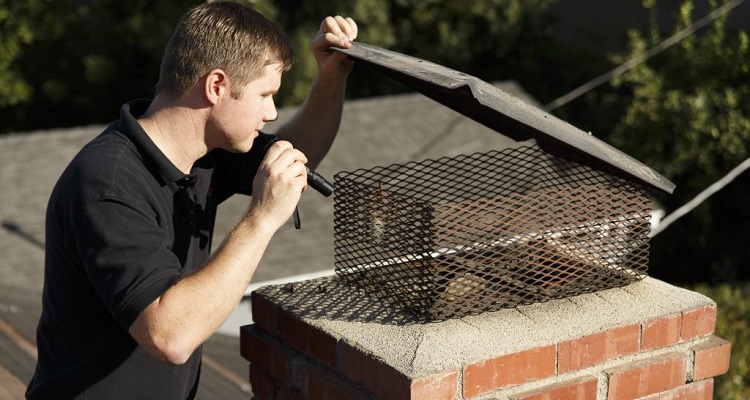
How to Know if Your Chimney Needs Lining
Most people will require a chimney lining installed within their home. However, a liner is not always necessary. This all depends on the kind of appliance and chimney inside your property.
For example, if you have an electric or gas fire-suite, a chimney liner is not always necessary. This is due to the fact that these types of fireplaces do not produce enough heat to damage the inside of a masonry chimney.
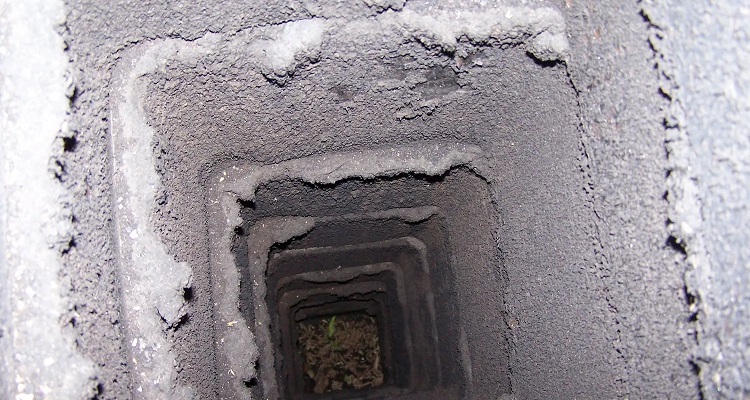
The average lifespan of a chimney liner varies significantly on the kind of material the liner is made out of. Stainless steel liners typically last between 15 to 20 years, while Clay and Pumice liners can last upwards of 50. Unfortunately, it can be quite challenging to spot the signs of a damaged chimney liner.
However, there are a few subtle ways in which you can identify if you need to replace an existing or damaged chimney liner. Signs of a chimney liner in need of replacement include debris of the liner falling into your fireplace or apparent cracks in the masonry inside of your chimney.
A great way to review the condition of your chimney liner is by regularly having it inspected by a professional chimney sweep. This precaution will defend you against unexpected, hazardous, and challenging situations.
DIY Replacing a Chimney Liner
Installing a chimney liner yourself can be both dangerous and expensive. This is a job better left to the professionals for both safe and effective results. Your existing chimney will need to be inspected thoroughly prior to carrying out any installation works.
Only a qualified, experienced professional can determine the condition of your chimney cavity, and it can become extremely dangerous, attempting to inspect these areas yourself. While the install may seem to be reasonably straightforward, a household chimney is one of the most critical fire prevention features in your home and should be cared for and treated by an expert.
Never attempt to carry out the installation of a chimney liner in your home yourself, unless you are a qualified, experienced professional. Another extremely hazardous concern that you must be aware of when dealing with any fireplace installations or repairs is the risk of carbon monoxide exposure.
Carbon monoxide is a silent, invisible, odourless killer that has a disastrous effect on our health. Breathing in carbon monoxide can result in dizziness, headaches, vomiting, nausea, and if levels are high enough, death.
Building Regulations & Planning Permission for a Chimney Cowl Installation
There are no specific planning permission requirements for installing a chimney liner in most homes. However, the work must comply with Building Regulations, particularly Approved Document J.
This documentation requirement sets out safety standards for flues, chimney liners, and ventilation systems, in particular when connected to combustion appliances. When installing a chimney liner, it's recommended that you hire an experienced and qualified professional (such as one registered with HETAS or similar) as they will follow any regulations and relevant safety procedures.
If your property is a listed building or in a conservation area, then planning permission may be required under these circumstances if the installation alters the external appearance (for example, a new flue terminal or pot).
In this instance, or if you need any additional work carried out, you may be charged a fee of around £100 to £200 for each application (depending on the scale of the work).
If in doubt, it is always recommended to check with your local council. Typically, planning permission decisions can take up to 8 weeks, though many applications are processed much sooner.
The Different Types of Chimney Liners
There are many different kinds of chimney liners available to suit your needs. We previously covered a few of the most popular materials used, such as Stainless Steel, Pumice, Clay and Ceramic.
Although there are many different styles of liners available to choose from. An expert installer will be able to advise you on the best quality materials that will work best with your type of fireplace and your home.
Stainless Steel Flexible Liners
Stainless Steel Flexible Liners or SSFL's are great for re-lining an existing chimney cavity as their flexibility allows them to be moulded to shape. There are two common types of SSFL's, single skin liners and twin skin liners.
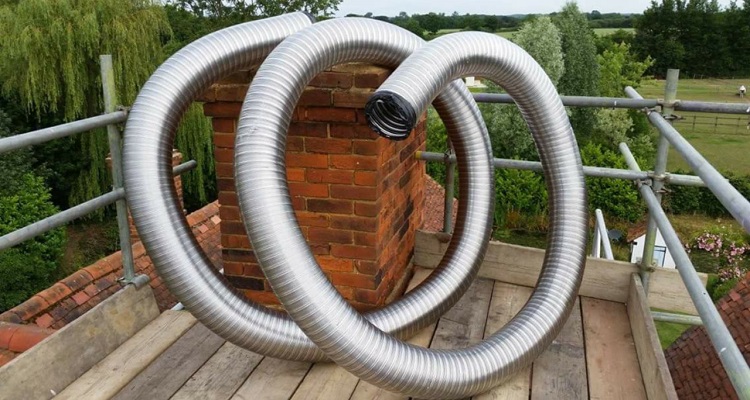
Single skin liners are generally used with gas appliances, as the unit transfers less heat. While double or twin skin liners are suitable for use with wood and multi-fuel appliances, thanks to their thicker protective coating.
The average cost of installing an SSFL is around £350-£700, depending on the size, scale and complexity of your fireplace. The average expected lifespan of an SSFL is between 15-20 years.
Pumice, Concrete and Clay Liners
Pumice, Concrete and Clay liners are all made with organic rock substances. This makes them exceptional natural insulators, enabling them to perform at high temperatures. Pumice chimney liners are perfect for use with open fireplaces.
Clay and concrete chimney liners are required to be used in dry, non-condensing areas for optimum results. Pumice, concrete and clay liners can also be used to effectively re-line an existing chimney.
The average cost of installing a pumice, clay or concrete chimney liner is between £500-£900, depending on the size, scale and complexity of your chimney. The expected lifespan of these liners is estimated to be around 30-50 years.
Gas Flue Block Systems
These specially designed systems have been designed for use with gas fireplace suites. These narrow flue systems have been engineered for fixing to adjacent brickwork.
Under no circumstances should a Gas Flue Block System be used in conjunction with wood-burning stoves or open fires, as they will not be able to withstand those high temperatures.
The average cost of installing a Gas Flue Block System is generally around £300-£650, depending on the scale and complexity of your fireplace. The average lifespan of a gas flue block system is estimated between 15-25 years.
Chimney Fans
A chimney fan is a mechanically engineered device that is intended to resolve chimney draft issues. These devices can be used effectively in partnership with multi-fuel and wood-burning systems, along with many others.
The purpose of the chimney fan is to boost the performance of your heating appliance. For example, a chimney fan can help a wood-burning stove perform better by increasing the airflow to the fireplace and eliminating excess smoke.
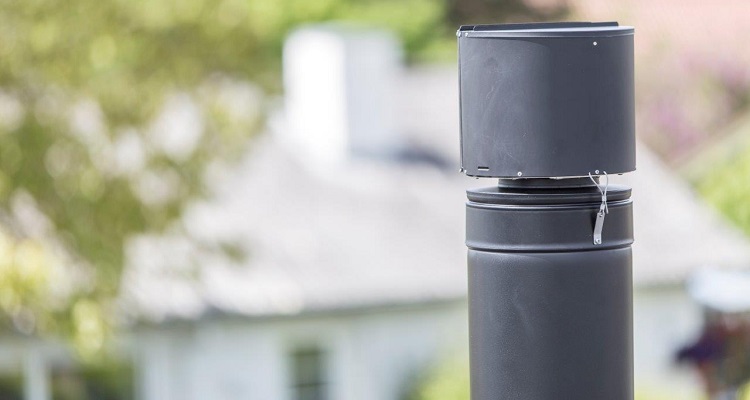
Always be sure to read the manufacturers guidelines for the qualifying criteria in which their products may be used. The average cost of installing a chimney fan system is generally between £400-£800 depending on the scale and complexity of your chimney.
The average lifespan of a chimney fan system is approximately upwards of 10 years.
Hiring a Chimney Lining Installer Checklist
Finding a decent chimney liner installer can be a daunting task, so we’ve made it simple with this foolproof checklist:
- Ask for references from prior customers. This will help you decide if they sound professional and respectable.
- Request them to provide proof of previous work that they’ve completed. Viewing their work like this will demonstrate what they’re capable of and if they’re up to the job you have in mind.
- Liability insurance is useful for any trader to have, as it not only protects the trader but their customer from any unwanted accidents and damage costs.
- Check whether a trader is part of an accreditation scheme, such as HETAS.
- Shop around for quotes and find out what is included in the price. Don’t hire the first chimney liner installer you come across.
FAQs
Do I Need A Chimney Liner?
What can happen if you don't have a chimney liner?
How Long Will A Chimney Liner Last?
Do I Need A Chimney Liner For A Wood-Burning Stove?
How Much Is A Chimney Cap?
How Much Does It Cost To Install A Stainless-Steel Flexible Liner?
Sources
https://www.instructables.com/id/Chimney-Liner-Installation-Step-By-Step-Guide/
https://www.gr8fires.co.uk/6-inch-flexi-to-vtec-twin-wall-connector
https://www.snhtradecentre.co.uk/?s=chimney+liner
https://directflues.co.uk/clay-lined-chimney-adapters



